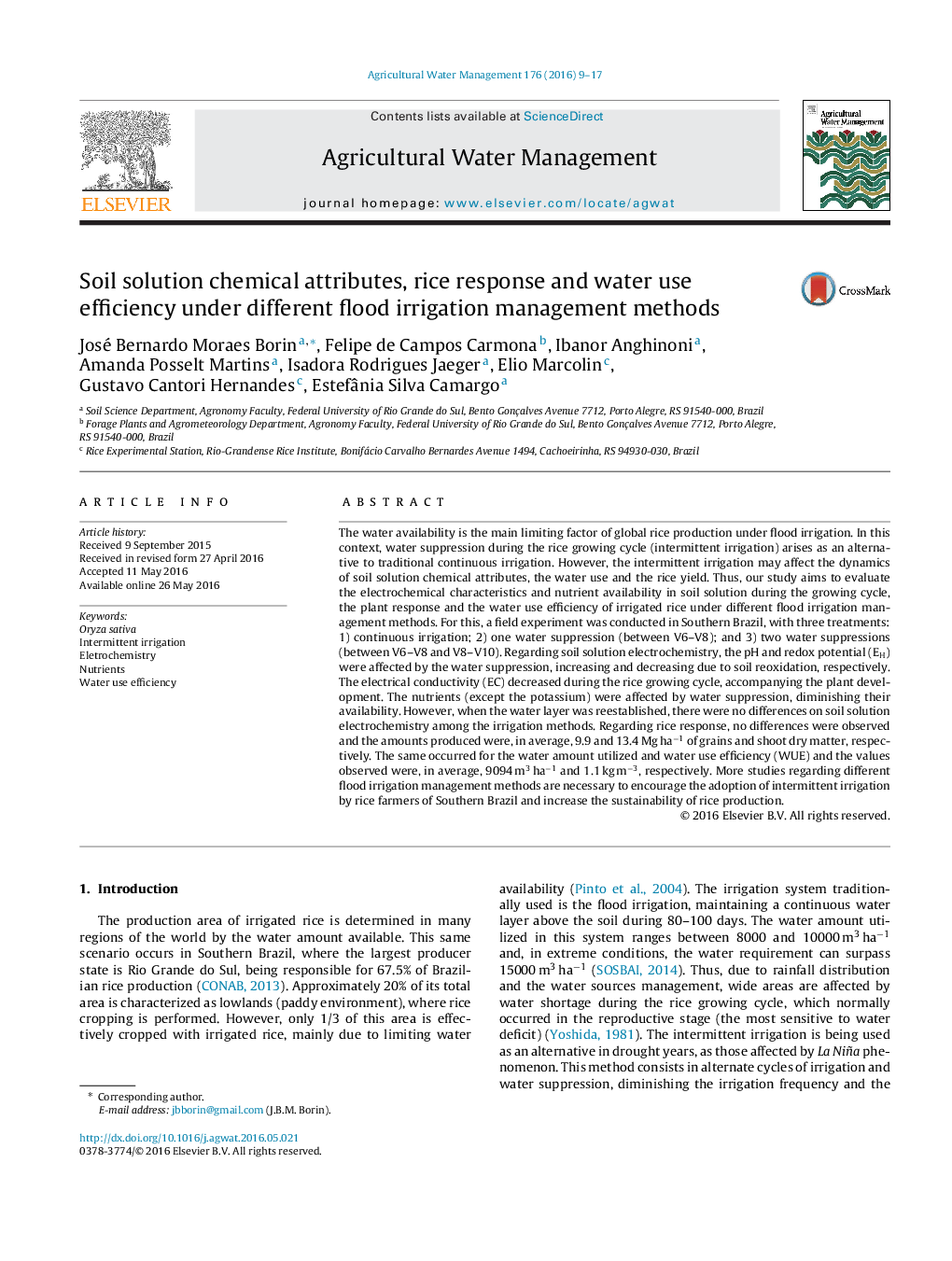| کد مقاله | کد نشریه | سال انتشار | مقاله انگلیسی | نسخه تمام متن |
|---|---|---|---|---|
| 4478230 | 1622904 | 2016 | 9 صفحه PDF | دانلود رایگان |
• Soil solution dynamics and content attributes are affected by irrigation.
• Nutrients after water layer reestablished are similar to continuous irrigation.
• Water suppression maintain rice yield compared to continuous irrigation.
• Water suppression diminishes the irrigation days but not the water use efficiency.
The water availability is the main limiting factor of global rice production under flood irrigation. In this context, water suppression during the rice growing cycle (intermittent irrigation) arises as an alternative to traditional continuous irrigation. However, the intermittent irrigation may affect the dynamics of soil solution chemical attributes, the water use and the rice yield. Thus, our study aims to evaluate the electrochemical characteristics and nutrient availability in soil solution during the growing cycle, the plant response and the water use efficiency of irrigated rice under different flood irrigation management methods. For this, a field experiment was conducted in Southern Brazil, with three treatments: 1) continuous irrigation; 2) one water suppression (between V6–V8); and 3) two water suppressions (between V6–V8 and V8–V10). Regarding soil solution electrochemistry, the pH and redox potential (EH) were affected by the water suppression, increasing and decreasing due to soil reoxidation, respectively. The electrical conductivity (EC) decreased during the rice growing cycle, accompanying the plant development. The nutrients (except the potassium) were affected by water suppression, diminishing their availability. However, when the water layer was reestablished, there were no differences on soil solution electrochemistry among the irrigation methods. Regarding rice response, no differences were observed and the amounts produced were, in average, 9.9 and 13.4 Mg ha−1 of grains and shoot dry matter, respectively. The same occurred for the water amount utilized and water use efficiency (WUE) and the values observed were, in average, 9094 m3 ha−1 and 1.1 kg m−3, respectively. More studies regarding different flood irrigation management methods are necessary to encourage the adoption of intermittent irrigation by rice farmers of Southern Brazil and increase the sustainability of rice production.
Journal: Agricultural Water Management - Volume 176, October 2016, Pages 9–17
